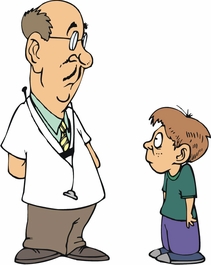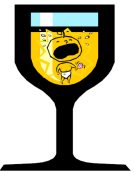Dyslexia:
Causes
Problems
Symptoms
 I have been searching for solutions to help Dyslexics for over twenty years as all three of my children are Dyslexic. Our family has had a lot of personal experience with "Primary Dyslexia" It runs rampant on both sides of my ex-husband's and my family which is why Primary Dyslexia has also been my main focus.
I have been searching for solutions to help Dyslexics for over twenty years as all three of my children are Dyslexic. Our family has had a lot of personal experience with "Primary Dyslexia" It runs rampant on both sides of my ex-husband's and my family which is why Primary Dyslexia has also been my main focus.
PRIMARY DYSLEXIA
There are three main types. "Primary Dyslexia" is a genetic form and is inherited. It is the most common form of Dyslexia. Dyslexics in this group typically experience problems with letter and number identification, spelling, reading, arithmetic, measurement, time, instructions and other skill sets that are normally performed by the left hemisphere. These Dyslexics are right brain dominant thinkers.
The majority of the world's population processes information primarily from the left which is linear and sequential by nature. They learn best with a step-by-step approach.
Right brain thinkers however respond well to learning with the "big picture" or overview of everything, whole images of words rather than phonics and relating all learning to real things or concepts. They see the "forest before the trees". In other words, they have to see the conclusion of anything before they can see the parts, sequences or meaning of a subject. The problem for these Dyslexics is that general teaching methods in many schools worldwide are organized primarily for the left brain student.
SECONDARY DYSLEXIA
Developmental Dyslexia or Secondary Dyslexia is caused by problems with brain development in a fetus that results in impaired neurological abilities in word recognition and spelling but leaves oral and non verbal reasoning intact. The difficulties and severity of this condition generally improve with age. The child may experience dyslexic symptoms throughout childhood but can perform well in college if they receive proper instruction. These children generally respond well to phonics.
TRAUMA DYSLEXIA
"Trauma Dyslexia" is caused by a serious illness or brain injury. Dyslexic symptoms can develop due to damage to the hearing from continuous flu, cold or ear infections in young children, the child cannot hear sounds in words or "phonemes" so they have a difficult time with sounding words out, spelling and learning to read.
Older children or adults develop "Trauma Dyslexia" from a brain disease or illness that affects their ability to comprehend language. These people usually can read, spell and write prior to the trauma.
There are different types of remedial reading and spelling programs aimed at these different types of learning issues.
OTHER DYSLEXIA CONDITIONS
Two other areas that are being studied that demonstrate dyslexic-like indicators are children suffering from FAS (Fetal Alcohol Syndrome) and children with ADD or ADHD.
FETAL ALCOHOL SYNDROME (FAS)
 FAS is caused by damage to the fetus when the mother drinks alcohol during her pregnancy. Cases can be slight to severe with many problems including Dyslexic traits.
FAS is caused by damage to the fetus when the mother drinks alcohol during her pregnancy. Cases can be slight to severe with many problems including Dyslexic traits.
Apparently no amount of alcohol is considered a safe limit when pregnant. Teaching these children can be very challenging and heart breaking. Children with ADD and ADHD seem to often experience spelling, reading and writing problems that are also similar to Dyslexia. They respond to different programs and the parent should try several or combination until they find the right fit for their child. We have often had good success with these children with our program also.
Recommended reading for FAS is this paper by TCHP Education Consortium
ADHD OR ADD
Attention deficit hyperactivity disorder (ADHD) is one of the most common childhood disorders and can continue through adolescence and adulthood. Symptoms include difficulty staying focused and paying attention, difficulty controlling behavior, and hyperactivity (over-activity).
ADHD has three subtypes:
* Predominantly hyperactive-impulsive
-Most symptoms (six or more) are in the hyperactivity-impulsivity categories
-Fewer than six symptoms of inattention are present, although inattention may still be present to some degree.
* Predominantly inattentive
-The majority of symptoms (six or more) are in the inattention category and fewer than six symptoms of hyperactivity-impulsivity are present, although hyperactivity-impulsivity may still be present to some degree.
-Children with this subtype are less likely to act out or have difficulties getting along with other children. They may sit quietly, but they are not paying attention to what they are doing. Therefore, the child may be overlooked, and parents and teachers may not notice that he or she has ADHD.
* Combined hyperactive-impulsive and inattentive
-Six or more symptoms of inattention and six or or more symptoms of hyperactivity-impulsivity are present. Most children have the combined type of ADHD.
SIGNS AND SYMPTOMS OF ADHD
Inattention, hyperactivity, and impulsivity are the key behaviors of ADHD. The symptoms of ADHD are especially difficult to define because it is hard to draw the line at where normal levels of inattention, hyperactivity, and impulsivity end and clinically significant levels requiring intervention begin. To be diagnosed with ADHD, symptoms must be observed in two different settings for six months or more and to a degree that is greater than other children of the same age.
The symptom categories of ADHD in children yield three potential classifications of ADHD predominantly inattentive type, predominantly hyperactive-impulsive type, or combined type if criteria for both subtypes are met:
Predominantly inattentive type symptoms may include:
* Be easily distracted, miss details, forget things, and frequently switch from one activity to another
* Have difficulty maintaining focus on one task
* Become bored with a task after only a few minutes, unless doing something enjoyable
* Have difficulty focusing attention on organizing and completing a task or learning something new or trouble completing or turning in homework assignments, often losing things (e.g., pencils, toys, assignments) needed to complete tasks or activities
* Not seem to listen when spoken to
* Daydream, become easily confused, and move slowly
* Have difficulty processing information as quickly and accurately as others
* Struggle to follow instructions.
Predominantly hyperactive-impulsive type symptoms may include:
* Fidget and squirm in their seats
* Talk nonstop
* Dash around, touching or playing with anything and everything in sight
* Have trouble sitting still during dinner, school, and story time
* Be constantly in motion
* Have difficulty doing quiet tasks or activities.
and also these manifestations primarily of impulsivity:
* Be very impatient
* Blurt out inappropriate comments, show their emotions without restraint, and act without regard for consequences
* Have difficulty waiting for things they want or waiting their turns in games
Most people exhibit some of these behaviors, but not to the degree where such behaviors significantly interfere with a person's work, relationships, or studies. The core impairments are consistent even in different cultural contexts.
Symptoms may persist into adulthood for up to half of children diagnosed with ADHD. Estimating this is difficult as there are no official diagnostic criteria for ADHD in adults. ADHD in adults remains a clinical diagnosis. The signs and symptoms may differ from those during childhood and adolescence due to the adaptive processes and avoidance mechanisms learned during the process of socialization.
A 2009 study found that children with ADHD move around a lot because it helps them stay alert enough to complete challenging tasks.
~Quoted from: National Institute of Mental Healthand Wikipedia
~My own daughter's Primary Dyslexic problems in school started us on the long road finding solutions and learning to understand how a "right-brained" person sees the world. We believe the concept of phonics to be too abstract for these young children. Rather, we believe it is more important and more appropriate to teach children learning skills that suit the particular way they process information. This method allows the student to complete classroom assignments satisfactorily.
We believe Primary Dyslexia is not a disability, it is a learning difference. Primary Dyslexics are creative, adaptive, problem-solving global thinkers.~
Thank you for your interest and understanding.
Karey Hope
Dyslexia Victoria Online founder
